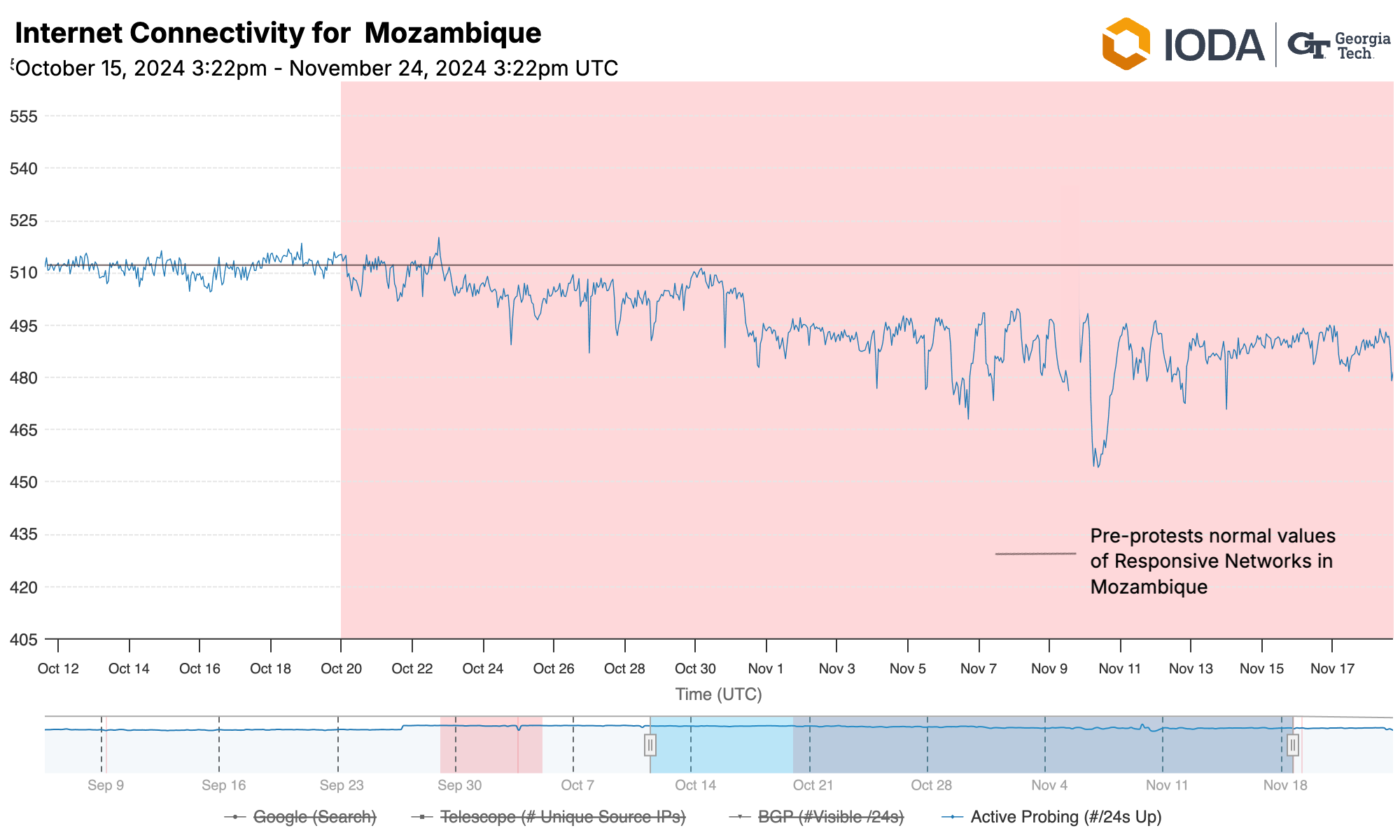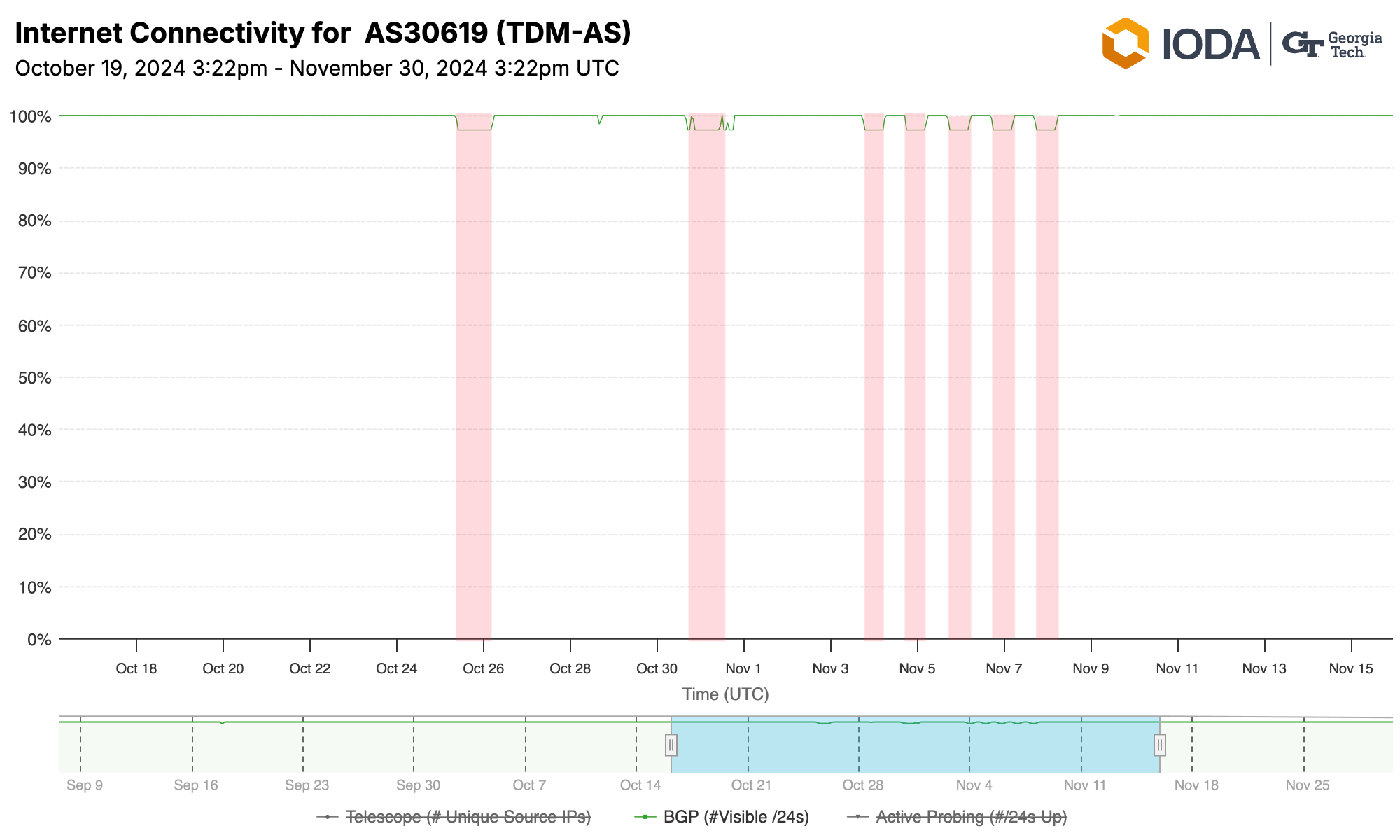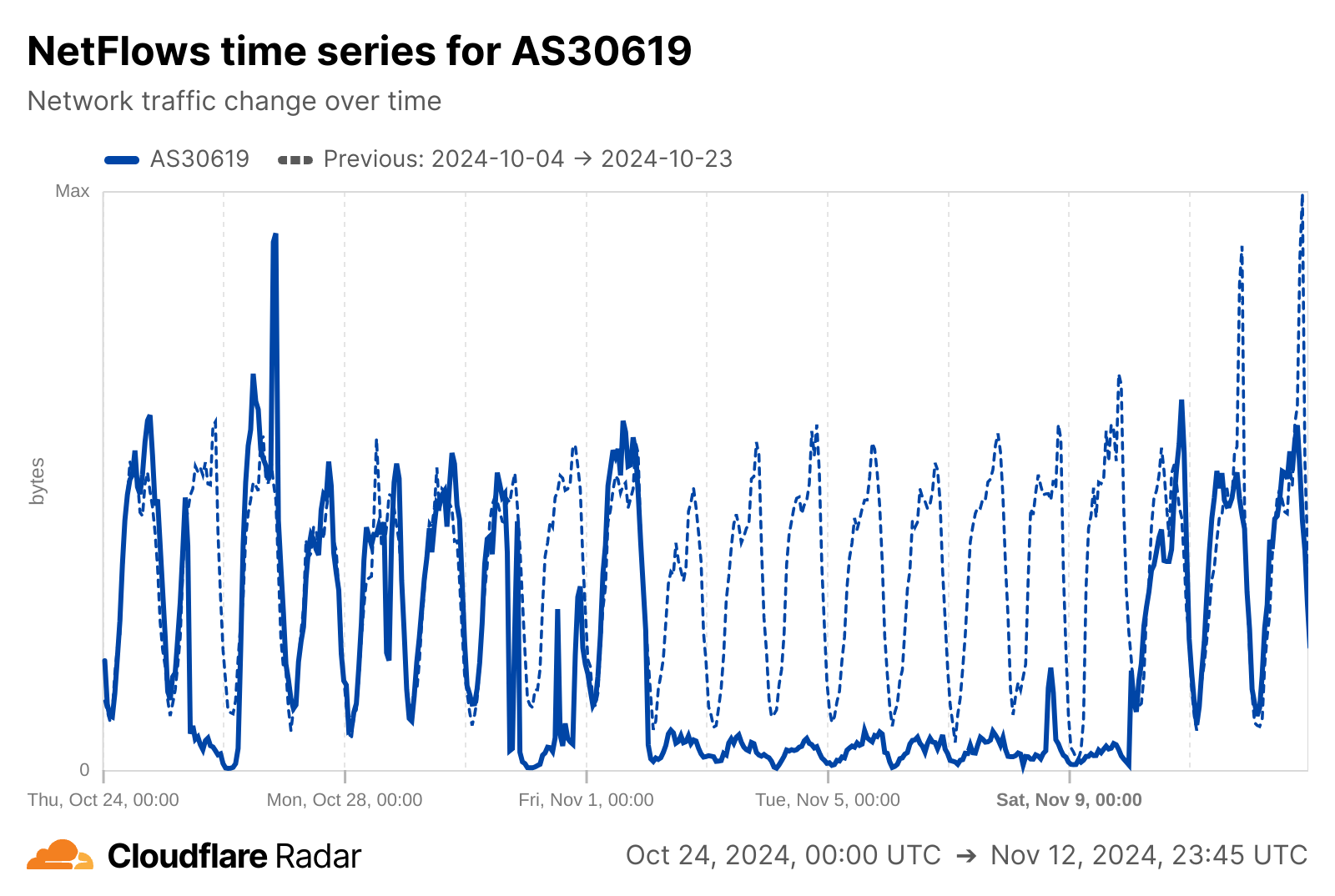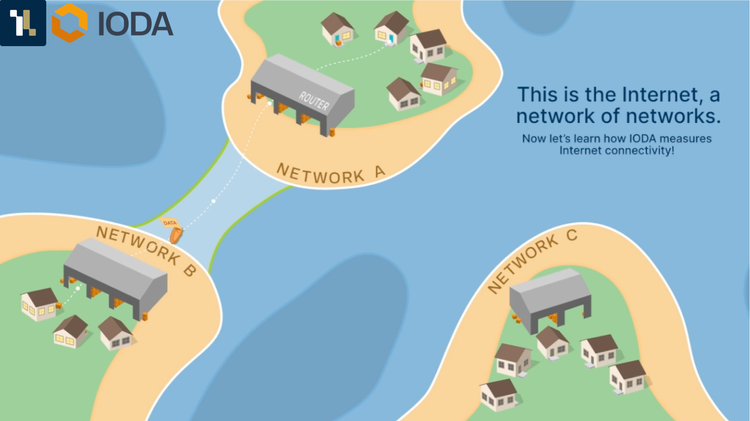Mozambique's Post-Election Fallout: Fatal Protests and Widespread Internet Shutdowns
Contributors: Amanda Meng, Tara Kelly, David Belson (Cloudflare)
Over the past three months, Mozambique has experienced Internet shutdowns and civil unrest following the country’s October 2024 disputed elections. Amidst Internet shutdowns, post-election protests have led to hundreds of deaths.
Context
On October 9, Mozambique held general elections where voters headed to the polls to elect the president, 250 members of the Assembly of the Republic, and members of 10 provincial assemblies. Several election observers, including the European Union, pointed to irregular counting and expressed concerns over whether Mozambique held free and fair elections. On October 24, the country’s election commission announced Daniel Chapo of the Frelimo party was the presidential winner. In response to the announcement, Venâncio Mondlane, an independent candidate backed by the opposition party Podemos, called for protests against the allegedly rigged elections.
Protests throughout October and November coincided with Internet disruptions and what appears to be Internet shutdowns from IODA data and partners. According to elections monitoring group Plataforma DECIDE, the ongoing protests from October 2024 to January 2025 have led to the deaths of 300 people, with police firing on peaceful protestors on October 16th. Shutting down the Internet or blocking services like messaging apps during protests can obscure from both national international view abuses to human rights.
The government did not announce it had interfered with the Internet until 10 November, when the Minister of Transport and Communications admitted the Mozambican government restricted Internet access “to avoid the destruction of the country.” Restricting access to the Internet limits the right to information enshrined in the Mozambican constitution. However, this isn’t the first time Mozambique has been under scrutiny for election and democratic concerns. In Mozambique’s 2019 general election and the 2023 local elections, voters experienced Internet shutdowns and election fraud.
Internet Connectivity
Country Level
Overall, IODA measurements show a steady decline in connectivity of Internet in Mozambique at the start of the protest with additional shorter periods of outages throughout late October and November.
At the start of the protests in Mozambique on October 21, IODA began to see abnormal drops at the country-level in the number of networks responsive to IODA’s probes, giving us a measure of networks connected to the global Internet in Mozambique.
We first see abnormal drops on both October 20 and October 21, but connectivity levels recover. On October 23 and again on October 31, we see connectivity levels drop without a recovery to the normal baseline (depicted in the graphic below by the solid black line). This demonstrates an overall decay or lowered level of connectivity of Internet in Mozambique. Then, from November 5th through November 10th, we see evidence of daily outages.

Internet Service Provider Level
The outages on November 5 through November 12 are even more apparent at the Internet Service Provider or Autonomous System level, particularly for Movitel (AS37342) and TMCEL (AS30619). Below, we show Active Probing values for Movitel, with red bands representing repeated outages during which we see drops in Movitel’s reachability, indicating a loss in connectivity.

Below, we show Routing Announcement, also known as Border Gateway Protocol (BGP), values for TMCEL. These show abnormal drops on October 25-26 and October 31 and nightly drops on November 4, 5, 7, and 8. The Routing Announcement signal is normally very stable at ~100%, so small drops can have a large impact on Internet users' connectivity.

If we look at traffic on TMCEL from Cloudflare Radar data during this same time, we can further see how drops in Routing Announcement mirror significant drops in network traffic for TMCEL (AS30619).

Regional level
Cloudflare Radar data also shows that disruptions are visible in Maputo City and Nampula on October 25-26 and November 4-8. The graphs below depict levels of HTTP requests in Maputo City and Nampulo. HTTP requests are messages that are sent when users request data over the Internet. The signal normally has a clear diurnal pattern, peaking during the day and dropping at night. The red arrows indicate where HTTP requests were at lower than normal levels for Maputo City and Nampula. We note that other regions may have been impacted, but our data is most complete and clear for these two regions of Mozambique.


Cause of Internet Outages
We know from the Internet Freedom community that experiencing an Internet disruption and not knowing the cause of it further fuels uncertainty in the midst of an already information-constrained environment. Unfortunately, IODA data does not allow us to infer the cause of an outage. In other words, the data shared above does not provide evidence of whether an abnormal drop is government-directed or “spontaneous”, meaning an outage caused by another phenomenon such as weather, network misconfiguration, or power outage. However, we have conducted published research that tells us more about the signatures of shutdowns. From this research, we know that shutdowns are significantly more likely to occur in autocratic societies, during political events such as elections or protests, and also more likely to occur precisely 1, 2, 3, or 4 days after a previous shutdown compared to a “spontaneous shutdown.” Applying these findings to the case of Mozambique, we can see that these outages show both political and technical signatures of shutdowns, bringing to relief the operators involved and time frames of the internet interference that the Minister of Transport and Communication ultimately admitted to.
IODA has been working in partnership with Amnesty International to support its full report on human rights violations during the protest. Please access the full report here.


